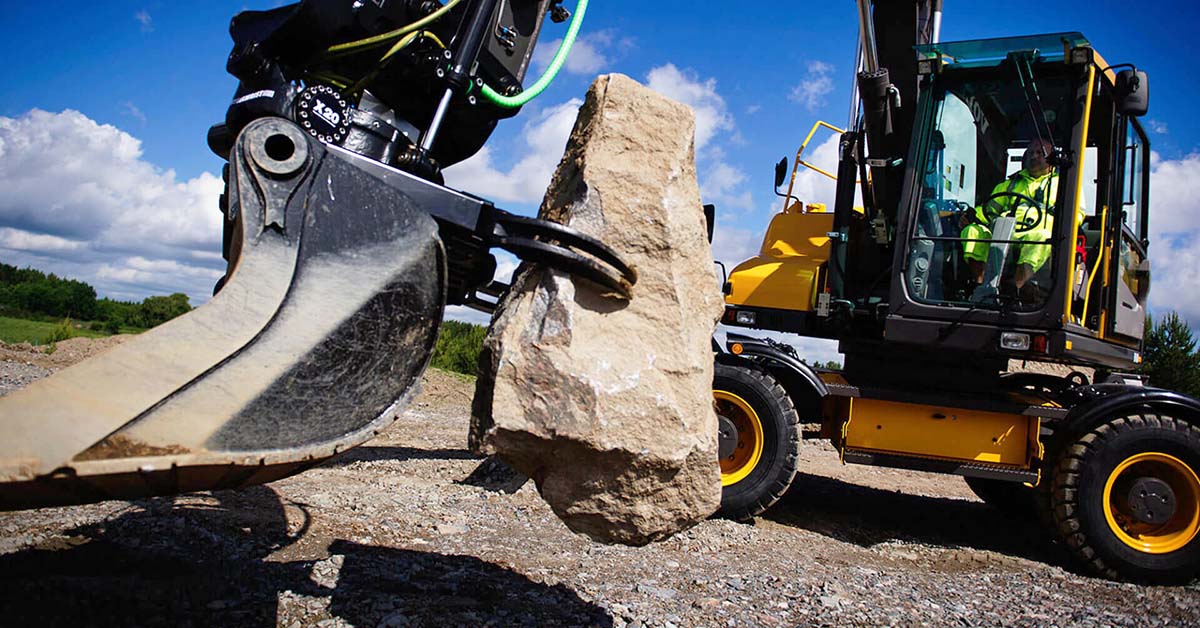Despite being considered a staple on construction sites in northern Europe, the adoption of tiltrotators in New Zealand is only just beginning to pick up speed. You might be familiar with this impressive piece of equipment and how it can maximise your earthmoving efficiency, but Steelwrist takes this innovation to a whole new level.
Let’s dive into some insights around whether or not a Steelwrist Tiltrotator is worth it, what you can expect from the learning phase, how it will change the way you think about excavators, and ultimately what sets Steelwrist apart from the competition. But first, check out this awe-inspiring technology at work:
Is it worth it?
One of the first barriers to purchasing a tiltrotator is the cost, and without truly understanding the benefits, business owners are reluctant to fork out the cost of this attachment. The price of a tiltrotator is often compared to that of a mini-excavator, but this begs the question – what’s the point in buying an additional machine if it’s just going to sit idle on site?
Businesses who are purchasing tiltrotators aren’t thinking about the cost to purchase, but instead are more closely considering the cost-savings and cost-effectiveness. The tiltrotator is an investment, not just another piece of kit. Not only will it allow contractors to achieve the same jobs faster, but it will also allow them to do more jobs with one machine and less labour. This will generate a return on investment and eventually businesses will be making money off the machine, thanks to the unmatched productivity. This is especially true in areas with higher labour costs, as the return on investment can be seen even sooner due to needing less workers on site.
The Learning Curve
The next barrier for businesses thinking about adopting this new system is the learning curve that comes with it. The traditional way of operating an excavator has become second-nature for long standing professionals, and picking up a new way of working can be tough. Users of the Steelwrist tiltrotator commonly recall the initial learning phase being quite a challenge, with all of the new capabilities.
But once they get through the potentially frustrating training period, they quickly begin to realise the benefits of this innovation. Not long after utilising a tiltrotator on site, contractors start to see how it eliminates the need for multiple team members, leaving those contractors to focus on higher impact work – instead of standing next to the excavator with a shovel, for instance. This initial phase can take up to 2 weeks to learn the different functions, but operators that are experienced with gaming consoles often pick up the controls even faster.
Change the way you think about excavators
The tiltrotator will ultimately change the way you approach excavation work. Operators will usually think of an excavator as a one-dimensional grading machine – and that’s all they’ll use it for. But adopting a tiltrotator not only means having the ability to spin 360 degrees and tilt on a 45 degree angle, it also means easily getting access to a multitude of different attachments.
This allows contractors to take on more jobs where they can manoeuvre the equipment in ways that aren’t possible with other machines. For example, having a gripper on the back of the bucket that is capable of handling both heavy duty and more delicate tasks eliminates the need for additional labourers, or the operator having to jump out of the cab. In other instances, construction crews are transporting a skid steer or a loader to the site, knowing they’ll need to lift and move materials. But with a tiltrotator, they can instead switch to the fork attachment on the excavator, eliminating the need for that additional machine. This frees up the loader to work on another job, instead of racking up hours sitting idle on site.
What makes Steelwrist Tiltrotators a cut above the rest?
While Steelwrist was a latecomer to the game of tiltrotators, they still came through with some of their own unique innovations to this tried and true system. They were the first to enable a 45 degree tilt, and while 5 degrees doesn’t sound like much, it provides a lot more control over the bucket when manoeuvring in tricky spaces.
Steelwrist was also first in the market with a steel-casted solution. A tiltrotator can add a lot of weight to the end of the stick, so to mitigate any issues with instability, Steelwrist casted their product in steel to create a stronger but lighter end result. This also addresses the common misconception around loss of breakout force, due to the distance between the stick and the bucket. With a more compact, lightweight solution, power isn’t an issue.
Steelwrist also has a long list of attachments suitable for many different jobs - from grippers and alternative buckets, all the way through to sweepers and pallet forks. And even if there’s an attachment that they don’t provide, they’ve created brackets that can be welded on to your favourite attachment, allowing you to use it with the full functionality of a Steelwrist tiltrotator.
Once contractors purchase a Steelwrist tiltrotator they soon realise the cost-savings of this impressive innovation – and once they get a bit more experience, they often wonder why they didn’t invest in this technology sooner. Operating this piece of machinery will save time on site by eliminating the need for extra crew members, and by streamlining the construction workflow. Europeans have been using tiltrotators for the last 30 years and the success of the system has been proven time and time again.
If you’re thinking about adding a Steelwrist tiltrotator to your arsenal but need a little bit more convincing, get in touch with the team today.



